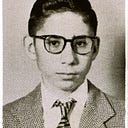Katherine Hepburn — The Skin of Her Face Was Like That of a Prune

Whenever I lecture on photography I always tell my audience or my students that it is the obligation of the portrait photographer to make his subject look as good as or better if all is possible. I can safely say that while some of my portraits have not always shown my subjects in the best light the results were due to my inexperience or some technical failure. Only once, once in my life as a portrait photographer did I take pictures with the intention of making my subject look worse. Not only that I gave my subject advance warning of the fact.
From 1977 to 1982 I was almost a daily listener of Don Harron’s radio show, Morningside, on Canadian Broacasting Corporation Radio. I always thought that those who followed after, in particular Peter Gzwoski neither had the voice nor the class and elegance of Harron. Harron was my friend in the darkroom when I was struggling in my almost daily attempts to teach myself how to print colour negatives. The tedium of going upstairs from my Burnaby basement home darkroom into outside daylight to check the colour on the face (in particular I remember a red haired stewardess I had photographed) to find that the colour was too cyan, or too yellow, or too green was only ameliorated by the sheer pleasure of Harron’s voice.
Sometime around 1983 or 1984 Vancouver Magazine writer Les Wiseman had an afternoon appointment with Harron at his Vancouver hotel, the Denman Inn. We arrived a bit early. Harron was in town to promote a book. As we waited in the lobby for our appointment hour I noticed Harron stepping out of the elevator. I went up to him to tell him that at about that time he was to see us. He denied this vehemently almost aggressively. He told me that someone had double-booked him. Then he looked at me and with a sheepish smile he said, “I was a journalist once. I understand. Let’s go upstairs.”

Wiseman interviewed him. Harron became most excited in telling us that he had once been discovered back stage by Katherine Hepburn who had told him what a good actor he was. Harron then gave us a brutal description of Hepburn’s skin. “The skin of her face was like a prune.”
When Harron indicated he was ready for his portrait (I had in advance set up my medium format camera and a light) he smiled at me and perhaps in an attempt to break the ice he said, “Guess who is going to take my portrait tomorrow?” I could not guess. “It is going to be Karsh of Ottawa.” I felt insulted in that he was showing off to purposely make me feel insignificant. I went for the jugular. “Mr. Harron, one of Karsh’s secrets is his use of the green filter for his portraits of men. It gives them more character and makes them look older. The filter is like this one. I am going to use it on you and your skin is going to look like Hepburn’s.”
